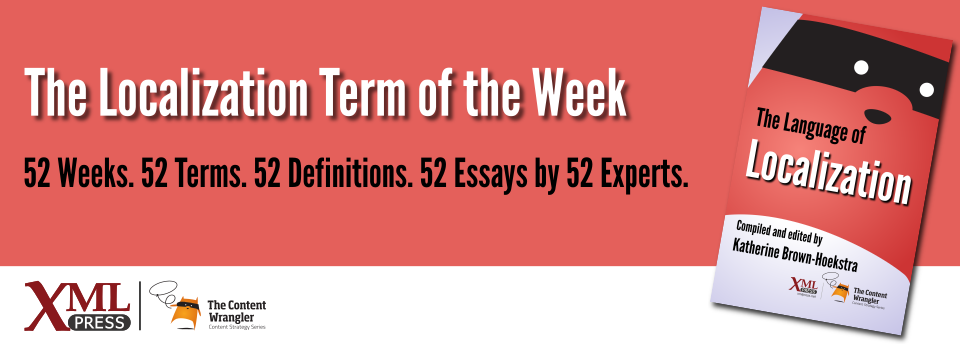What is it?
A curated set of vocabulary selected to communicate clearly and simply for a specific purpose. Controlled language is often used when writing for machine translation or for global audiences.
Why is it important?
Controlled language is a critical feature of writing for localization. It is an umbrella term that encompasses several initiatives, including Plain Language, Simplified Technical English, and Caterpillar Fundamental English, among others. Effective controlled language initiatives choose the simplest terms needed to convey meaning, while also restricting grammar, syntax, and verb forms.
Why does a technical communicator need to know this?
By including controlled language in your global content strategy, you gain significant benefits[Porter 2012]:
- Improved comprehensibility: controlled language can help make content easier to read and understand.
- Improved consistency and reuse: when used with structured authoring (e.g., XML) and component-based content management, controlled language can help you maximize reuse.
- Better terminology management: controlled language specifications provide an objective starting point for managing terminology, particularly across disciplines[Muegge].
- Improved quality control and efficiency: by automating tedious tasks like checking compliance, editors can use their time on higher-value activities, such as improving the internationalization, organization, and intelligence of the content.
- Improved quantitative metrics: several tools exist that enable you to track compliance to a controlled language specification. These tools facilitate benchmarking before and after editing the content for compliance.
- Reduced localization costs: just by limiting vocabulary and reducing word count, companies can save 20% or more on localization costs.
Implementing controlled language is not trivial. When you transition to controlled language, you need to be thoughtful, proactive, and prepared for the long term. Rather than re-invent the wheel, start with the controlled language initiative that most closely matches your needs[Brown-Hoekstra 2013]:
- Plain Language: a US government regulation to provide clear communication in government documents. (plainlanguage.gov)
- Simplified Technical English: a specification originally developed for the aerospace industry (but now used in many regulated industries) that strictly limits vocabulary and syntax. (asd-ste100.org)
- Caterpillar Fundamental English: a vocabulary of about 850 words. Developed in the 1970s, it helped lay the foundation for controlled language.
Controlled language benefits your content strategy by maximizing consistency and reuse, improving efficiency, reducing localization costs, and improving quality control[Porter 2012].
References
- [Porter 2012] The Content Pool: Porter, Alan. Porter’s book provides a great overview of content strategy. Pages 50-54 talk about controlled language in more detail.
- [Muegge] Controlled Language: The Next Big Thing in Translation: Muegge, Uwe. This article talks about the implications of controlled language for translation. Controlled language is part of terminology management.
- [Brown-Hoekstra 2013] : Brown-Hoekstra, Kit. The essay for this book is based on this presentation and blog post for GALA.
- [Esmond 2019] 5 Best Alternatives to the Google Translator Toolkit: Esmond, Ari. A survey of alternatives to the Google Translator Toolkit.
- Summary of Controlled Language Initiatives:

